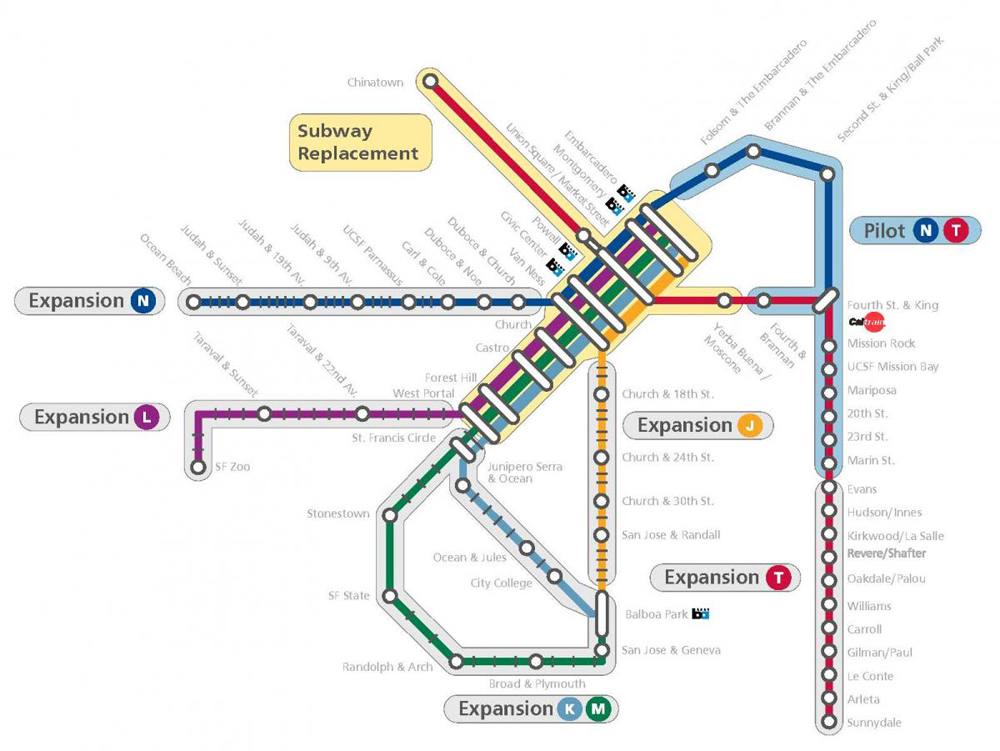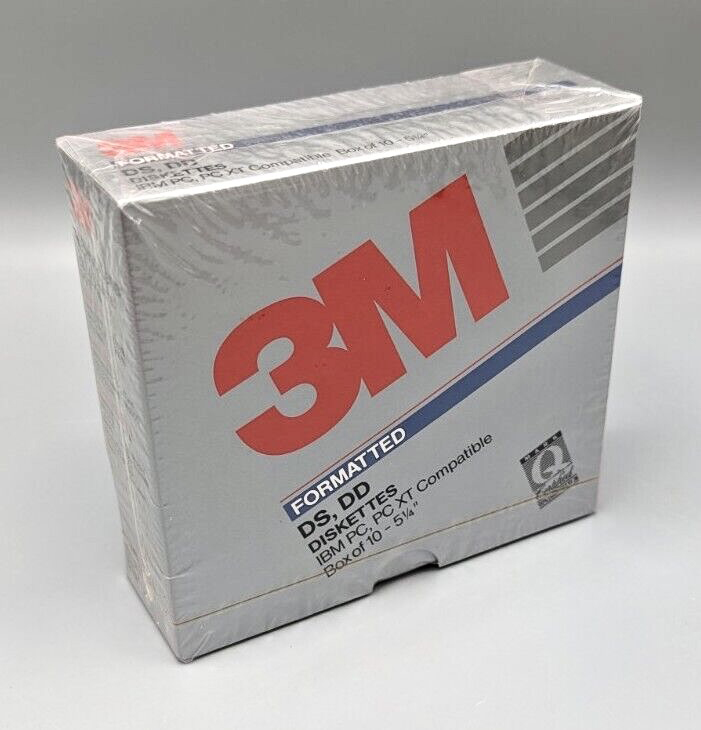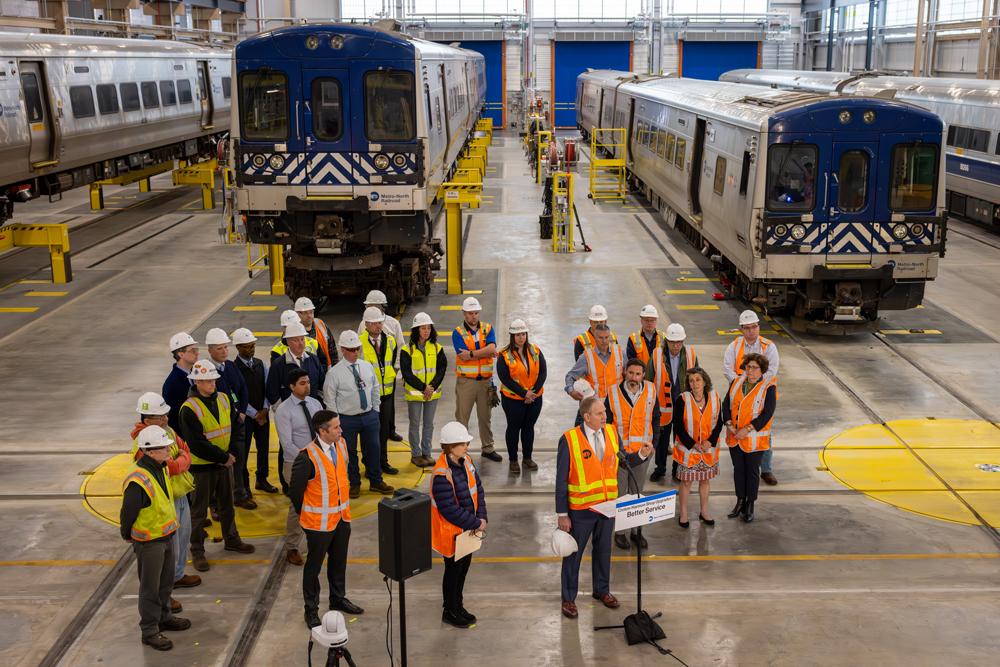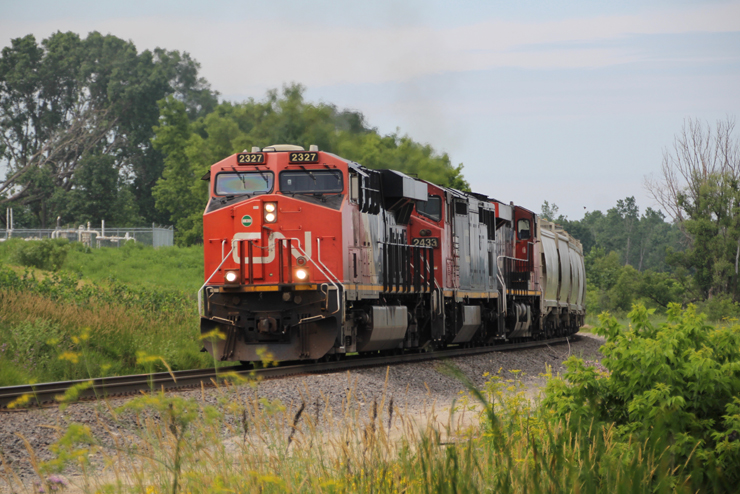
SAN FRANCISCO — San Francisco is far from a center of cutting-edge computer technology — when it comes to its light rail system.
KGO-TV reports that a portion of the San Francisco Municipal Transportation Agency, or Muni, rail system still uses an Automatic Train Control system installed in 1998 that requires its software to be loaded with obsolete 5¼ -inch floppy disks each morning.

That system operates the Market Street Subway, the 3-mile, seven-station tunnel used all or in part by five Muni light rail routes (BART trains operate on a second level for part of the tunnel). Jeffrey Tumlin, Muni’s director of transportation, told the station that while the system is still reliable after 26 years, it was designed for a life of 20 to 25 years.
“It’s a question of risk,” Tumlin said. “The system is currently working just fine but we know that with each increasing year, risk of data degradation on the floppy disks increases and that at some point, there will be a catastrophic failure.”
A decade-long, multi-million dollar effort, the Train Control Upgrade Project, aims to upgrade the entire Muni system with Communications-Based Train Control, a wi-fi or cellular-based system that provides continuous communication and will allow real-time tracking of every light rail vehicle. Currently, above-ground trains are tracked by GPS, but Communications-Based Train Control is more accurate. The agency is still seeking state and federal funding to help with the upgrade, Tumlin said. The project has fallen behind its original schedule and remains in the planning phase; completion is projected for 2029.
In the meantime, as Tumlin told KQED-TV last year, the agency needs some job skills that aren’t exactly cutting edge: “We have to maintain programmers who are experts in the programming languages of the ’90s in order to keep running our current system. So we have a technical debt that stretches back many decades.”
Those individuals have a huge role to play when there are issues, Muni spokesman Stephen Chun told the San Francisco Standard: “We recognize that any failure of the outdated equipment is certain to impact everyone working on or riding Muni. Fortunately, our crew makes the difference between these failures crippling the system for weeks or for just a few hours.”














Can’t believe it. An entity that moves slower than one of the Federal agencies. Worked for the USPS for over 33 years. and now retired. They stopped using floppies more than 20 years ago. Got to love it.
The reporters in the KGO TV news story mentioned and held up 3-1/2″ floppy diskettes. However, the SFMTA officials did not mention what kind of floppies they were using. I would like to think they are using 3-1/2″ floppies, as they were state of the art in the late ’90’s (but not cutting edge).
You would have thought the recently opened T Line extension to China Town would have installed the new Wifi system?
In the video clip linked, the SFMTA official specifically mentions 5 1/4-inch disks.
The system used 5 1/4″ floppies in 1998? I’m pretty sure the majority of the world moved to 3 1/2″ floppies by 1990 and were well into the CD-ROM era by 1998 (and even rewritable CD-ROMs by then).
It shouldn’t be that difficult to emulate the floppy disk, though in the long run it would be better to update all of the hardware.
The downside of microprocessor controlled systems is that the processors themselves get EOL’ed after at most 10 years.
Industrial control systems run on forever because they don’t need the latest and greatest fad. What is the alternative, relay controlled systems?
I agree that there should be way to emulate the 5 1/4 inch disks without too much effort. When they do they should run it in parallel with the existing system for a year and make sure the results always match up.
The above article reminds me so much of the slow speed TOPS terminal data system I had to maintain when first introduced to my new SPRR telecom MW radio job in 1984, west of El Paso, TX and east of Tucson, AZ.
SPRR telecom was able to run their 4.8 KBS data, later upgraded to 9.6 KBS data, on any of their 600 multiplexed analog, 4 khz audio bandwidth channels, MW system, where those old IBM controllers used the 5 1/4″ floppies. We sometimes relied on a vendor in Nachodoces, TX for new 5 1/4″ floppies as well as some other IBM outdated supplies, and also for the current IBM 4230-32 “newsroom” printer supplies for the train crews.
When DRG&W’s Phillip Anshutz took over in 1990 – 1996, he recognized the immediate need for high speed data and started ordering high speed T1 telco lease lines to replace some of the slow speed TOPS terminal functions and applications. Technician job layoffs ensued and I once again found myself at the bottom of the seniority list, but managed to hang on at my current position and location in NM…whew!
Then in 11-96 when UPRR took over DRG&W’s SPRR, they introduced everyone to hi-speed computers over those T1 telco lease lines while at the same time building a new high speed digital MW system to replace the old analog Lenkurt and Collins MW radio repeaters with state-of-the-art NEC digital hi-speed MW radio repeaters. By about 2008, UPRR was finally able to scrap all the analog MW radios with the NEC high speed MW replacements, as well as the remaining TOPS terminals… with all those 5 1/4″ floppies. lol And I might add that all the DTMF PBX phones were replaced with Avaya digital internet phones. https://en.wikipedia.org/wiki/TOPS
Ten million people could all talk.for ten million years and not convince me there should
be federal money
California, pay for your own trains.
I concur! In September of 2023 the SF BoS proposed reparations and a yearly stipend for Black residents.
https://apnews.com/article/san-francisco-black-reparations-apology-8967c828a52c8ce6ac08c77027a23187
If they can afford that, they can afford to pay for their own transportation upgrades. Then again, that’s how Washington panders for votes.
(Sarcasm On) BTW, my sister did the DNA thing. According to the results, we have about 2% North African DNA in our DNA. Perhaps I can get in line for $5 mil lump sum and $100k yearly handouts. (Sarcasm Off)